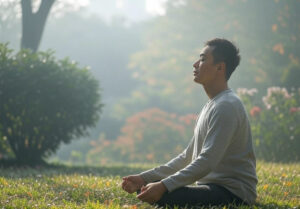In an era where connectivity is at its peak, where social media platforms beckon with the promise of never being alone, there’s an ironic twist — a growing appreciation for solitude. This article explores the nuanced art of being alone, not as an escape from society but as a pathway to self-discovery, creativity, and mental health. We delve into why solitude isn’t loneliness, how it has been celebrated through history, and how it can be actively cultivated in today’s hyper-connected world.
Solitude vs. Loneliness: Understanding the Difference
Loneliness often carries a negative connotation, associated with feelings of isolation, emptiness, or unwanted solitude. Solitude, however, is a chosen state, one where individuals seek time away from others to recharge, reflect, or engage in personal projects. Psychological studies suggest that while loneliness can lead to negative health outcomes, solitude can enhance creativity, self-awareness, and emotional health when embraced positively ().
Historical Perspectives on Solitude
From the hermitages of ancient monks to the solitary musings of philosophers like Kierkegaard and Nietzsche, solitude has been a cornerstone for intellectual and spiritual growth. Figures like Virginia Woolf and Emily Dickinson embraced solitude as essential for their creative processes, illustrating that some of the most profound ideas and art have been born from moments of solitude. These historical examples show that solitude has always been a fertile ground for human introspection and innovation ().
The Science of Solitude
Neuroscience and psychology have begun to uncover why solitude can be beneficial. Being alone can reduce stress by lowering cortisol levels, enhance problem-solving skills, and promote a state known as ‘transient hypofrontality,’ where the brain’s frontal cortex, which handles executive functions, quietens down, allowing for more creative and divergent thinking (). Solitude also aids in self-regulation, helping individuals understand their emotions better and manage them effectively.
Solitude in the Age of Digital Overload
Today, the challenge isn’t finding solitude but carving it out amidst constant digital distractions. The concept of a digital detox has gained traction, where individuals deliberately disconnect from digital devices to reconnect with themselves or nature. This practice can lead to improved mental clarity, reduced anxiety, and a more profound appreciation for one’s own company ().
Cultivating Solitude
- Mindful Solitude: Incorporating mindfulness practices like meditation can transform solitude into a meditative state, fostering a deeper connection with oneself.
- Creative Solitude: Engaging in arts, writing, or any form of creative expression can make solitude a source of joy and productivity.
- Nature’s Embrace: Spending time in nature, away from urban noise and digital screens, can be one of the most effective ways to experience solitude’s benefits.
- Routine Solitude: Setting aside time each day or week for solitude, whether it’s a morning walk, reading, or simply sitting in silence, can become a cherished part of one’s routine.
The Social Aspect of Solitude
Ironically, solitude can enhance social interactions. When people take time for themselves, they often return to social settings with renewed energy, clearer thoughts, and a better understanding of their needs and boundaries. This can lead to healthier relationships where one’s presence is more engaged and meaningful ().
Challenges and Misconceptions
Not everyone finds solitude easy or immediately beneficial. Cultural stigma around being alone can lead to misconceptions about what it means to enjoy one’s own company. Additionally, for some, solitude might highlight underlying issues like depression or anxiety, where professional help might be necessary. Thus, understanding one’s relationship with solitude is crucial.
The Future of Solitude
As we move forward, the art of solitude might become more institutionalized in our daily lives, much like wellness practices. Schools might teach children the benefits of solitary reflection, workplaces could offer “quiet zones” for focused work, and urban planning might increasingly consider spaces for peaceful retreat.

Solitude, when chosen and embraced, offers a rich tapestry of benefits from creativity to mental peace. In a world that often equates busyness with productivity, rediscovering the joys and benefits of being alone is not just countercultural but essential for personal growth and societal well-being. As we navigate through the noise of the modern world, perhaps the greatest gift we can give ourselves is the time to be alone, to listen to the silence, and to truly hear our inner selves.
This article aims not only to educate on the concept of solitude but to inspire readers to explore it as a means of personal enrichment in an always-connected society.




